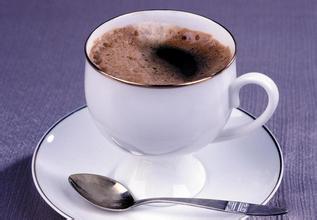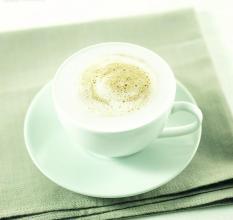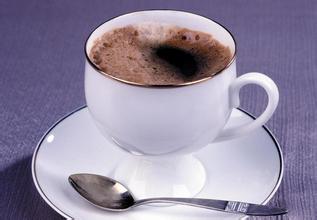FST Santa Teresa Estate, Baru Volcano, Panama
Tropical rain forest climate in Panama, hot and humid and mosquito ravages make it difficult for many Nordic people to adapt, continue to suffer from disease, many people died as a result. In 1911, Toleff Bache, who had suffered from malaria for the fourth time, took a steamboat along the Pacific coast to the small town of Bopquete in Chiriqui province, where the dry climate and fresh air were suitable for recovery. Deeply in love with the land, he returned here with his wife Julia in 1924 and bought a piece of land at the foot of the Baru volcano, what is now Lelida Manor. They built their own house here, Nordic-style architecture, and have lived here ever since, and started the operation of the coffee farm. Thanks to Boquete's unique climate, wet and dry seasons, ample sunshine and precipitation, and fertile soil formed by volcanic ash from the Baru volcano, Lelida's coffee cultivation quickly grew on its own, and in 1929, the estate's coffee beans were first exported to Germany, earning a good reputation for Panamanian coffee. In the following 3/4 centuries, the cultivation of Lelida coffee, as a family manor, has developed continuously and formed its international reputation. The coffee here grows at an altitude of 1500 meters above sea level. The coffee garden is surrounded by a well-protected natural tropical ecological park. Nearby Baru Volcano National Park and La Amistad National Park are natural protected areas for animals and plants, which form the manor's unique microclimate and unique flavor. The beans are fully washed and processed with fresh emerald green appearance. The beans are full and shiny. At first glance, it looks like high-density hard beans. Baked to an obvious degree of high fruit aroma shows, the entrance is also juice-like sweet and sour, bright and refreshing. A little deeper baking, dry fragrance in the sweet vanilla and nectar sweet blend together, intoxicating, high+ baking degree, acidity decreased, mellow, but also significantly increased sweetness, fruit acid is also softer and vivid, in the aftertaste can still feel a strong sense of sweetness and fragrance of fruit has always preferred the strong taste of African beans, the impression of Central American beans to me seems to have become synonymous with moderation Whether in Costa Rica or Guatemala, Caribbean island coffee is closer to the pronoun of "fruit juice". And this Panama did give me a pleasant surprise, refreshing fruit acid is obviously more vivid than other countries in China and the United States and closer to the ripe sweet and sour aroma of the fruit, while the entrance, in addition to a balanced and clear, rich sweetness and slightly syrup sticky taste to enhance its smoothness and vitality-except for the floral and citrus flavor, the overall taste is not inferior to the rose summer.

Important Notice :
前街咖啡 FrontStreet Coffee has moved to new addredd:
FrontStreet Coffee Address: 315,Donghua East Road,GuangZhou
Tel:020 38364473
- Prev

Coffee bean producing areas in the Jilimazaro Mountain Fire area in the highlands of northern Tanzania
First experience of AA coffee beans in Tanzania: Tanzania coffee beans are absolutely comparable to neighboring Kenya, but the quality of coffee in the country is not strictly controlled, and carelessness in many processes often destroys the quality of coffee (such as transportation). Good quality Tanzanian coffee beans are divided into AA and A grade. The raw beans of this Tanzanian AA coffee bean look neat and have a delightful hint.
- Next

Colombia Coffee Lazmus Manor
Cauca Province is a certified producing area for coffee origin in Colombia, with an average altitude of 1758 meters and a maximum altitude of 2100 meters. Cauca Province is 80% mountainous. The biggest difference in climate from other producing areas is probably the relatively large temperature difference, with a temperature difference of 11℃ between day and night, and an average temperature of 18℃ during the day. The temperature difference between day and night is an important factor in making good coffee. Low temperatures at night and relatively high temperatures
Related
- Does Rose Summer choose Blue, Green or Red? Detailed explanation of Rose Summer Coffee plots and Classification in Panamanian Jade Manor
- What is the difference between the origin, producing area, processing plant, cooperative and manor of coffee beans?
- How fine does the espresso powder fit? how to grind the espresso?
- Sca coffee roasting degree color card coffee roasting degree 8 roasting color values what do you mean?
- The practice of lattes: how to make lattes at home
- Introduction to Indonesian Fine Coffee beans-- Java Coffee producing area of Indonesian Arabica Coffee
- How much will the flavor of light and medium roasted rose summer be expressed? What baking level is rose summer suitable for?
- Introduction to the characteristics of washing, sun-drying or wet-planing coffee commonly used in Mantenin, Indonesia
- Price characteristics of Arabica Coffee Bean Starbucks introduction to Manning Coffee Bean Taste producing area Variety Manor
- What is the authentic Yega flavor? What are the flavor characteristics of the really excellent Yejasuffi coffee beans?

